This picture shows two views of the nucleus of Comet Wild 2 captured by the Stardust spacecraft during its January 2004 flyby. The image on the left was taken when Stardust was about 500 km (311 miles) from the nucleus.
Click on image for full size
Images courtesy NASA/JPL.
Nucleus of Comet Wild 2
The image on this page shows the best views we've ever had (so far) of
the nucleus of a comet. On January 2, 2004, the Stardust
spacecraft flew
past Comet Wild 2 at a relative speed of roughly six kilometers per second
(four miles per second). During that flyby the spacecraft shot 72 pictures
of the comet; these are the best two. The nucleus of Wild 2 is about five
kilometers (3.1 miles) wide. Stardust passed within 240 km (149 miles)
of the nucleus at closest approach.
The spacecraft entered the comet's coma, the vast cloud of dust and gas
surrounding the nucleus, on December 31, 2003. Besides snapping the best-ever
pictures of a comet's nucleus, Stardust also collected particles of dust
emitted by the comet. The mission will return
those particles to Earth in a small capsule that is scheduled to land in the desert in Utah in January
2006. Scientists are eager to directly study material from a comet since
they expect to learn a great deal about those "dirty snowballs" from even
a few grains of dust.
You might also be interested in:
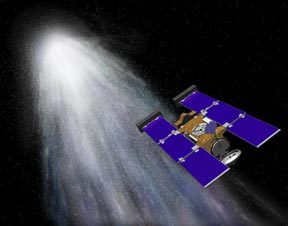
NASA's Stardust mission was the first spacecraft to collect samples of material directly from a comet and return them to Earth. Stardust was launched by a Delta 2 rocket from Cape Canaveral Air Station,
...more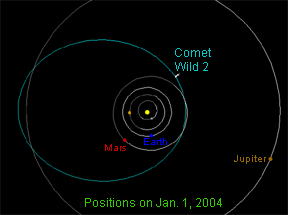
Comet Wild 2 is a short-period comet that orbits the Sun once every 6.39 years. A Swiss astronomer named Paul Wild discovered it on January 6, 1978. Wild 2 is pronounced "Vilt 2". The comet comes about
...more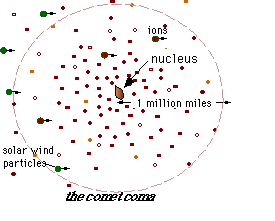
As the ices of the comet nucleus evaporate, they expand rapidly into a large cloud around the central part of the comet. This cloud, called the coma, is the atmosphere of the comet and can extend for millions
...more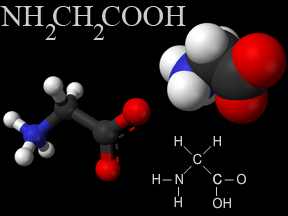
In August 2009, scientists reported finding a type of amino acid in a sample returned from a comet. Amino acids are the building-blocks of proteins, one of the key molecules in living creatures. The comet
...more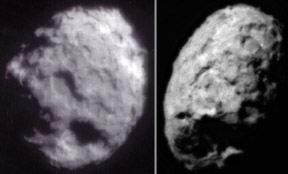
The image on this page shows the best views we've ever had (so far) of the nucleus of a comet. On January 2, 2004, the Stardust spacecraft flew past Comet Wild 2 at a relative speed of roughly six kilometers
...more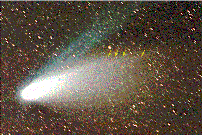
Hale-Bopp continues to offer surprises as astronomers study the comet. Using the Hubble Space Telescope and the International Ultraviolet Explorer, astronomers have found that there are distinctly different
...more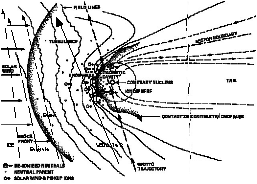
Six spacecraft flew by Halley's comet in 1986. There were two spacecraft launched from Japan, Suisei and Sakigake, and two from the Soviet Union, Vega 1 & 2. One spacecraft, ICE, from the United States
...more














